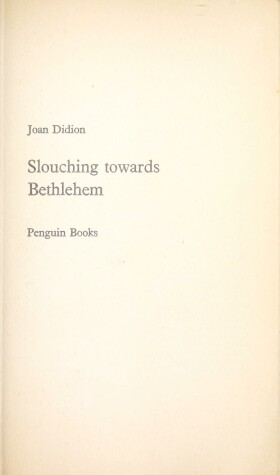FSG Classics
2 total works
Classic literary journalism which defined, for many, the state of America during the upheaval of the Sixties Revolution
`It was not a country in open revolution. It was not a country under enemy siege. It was the United States of America in the cold late spring of 1967, and the market was steady and the GNP high and a great many articulate people seemed to have a sense of high social purpose and it might have been a spring of brave hopes and national promise, but it was not..."'
`So physically small, so temperamentally unobtrusive, and so neurotically inarticulate' that people tended to forget that her presence ran counter to their best interests, Joan Didion slipped herself into the heart of the Sixties Revolution, only to slip out again with this savage masterpiece, which, since first publication in 1968, has been acknowledged as an unparalleled report on the state of America during those curious days.
A ruthless dissection of American life in the late 1960s, from the author of The Last Thing He Wanted and A Book of Common Prayer.
Somewhere out beyond Hollywood, resting actress Maria Wyeth drifts along the freeway in perpetual motion, anaesthetized to pain and pleasure, seemingly untainted by her personal history. She finds herself, in her early thirties, radically divorced from husband, lovers, friends, her own past and her own future.
Play It As It Lays is set in a place beyond good and evil, literally in Los Angeles and Las Vegas and the barren wastes of the Mojave, but figuratively in the landscape of the arid soul. Capturing the mood of an entire generation, Didion chose Hollywood to serve as her microcosm of contemporary society and exposed a culture characterized by emptiness and ennui.
Two decades after its original publication, it remains a profoundly disturbing novel, an immaculately wrought portrait of a world (California on the cusp of the 70s) where too much freedom made a lot of people ill.

